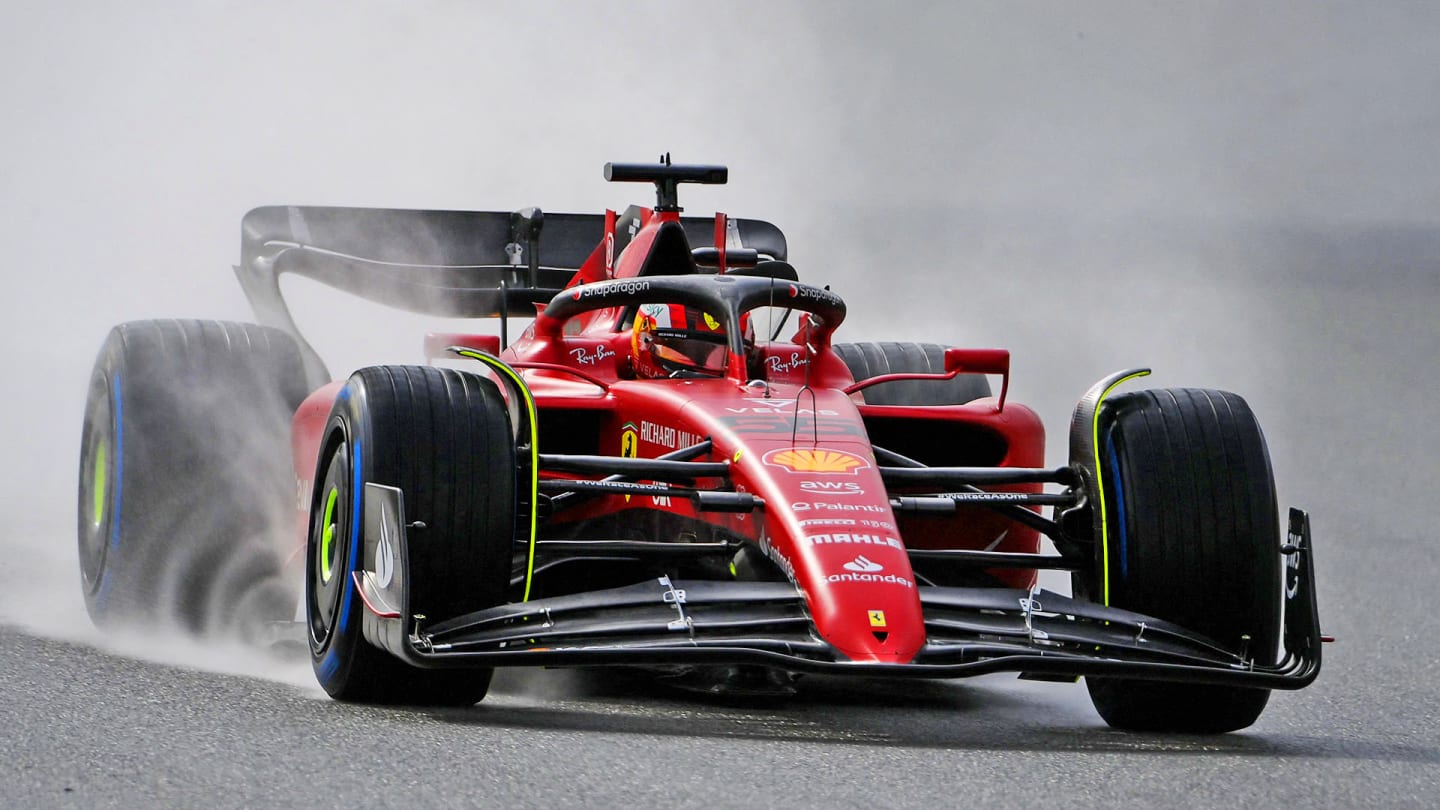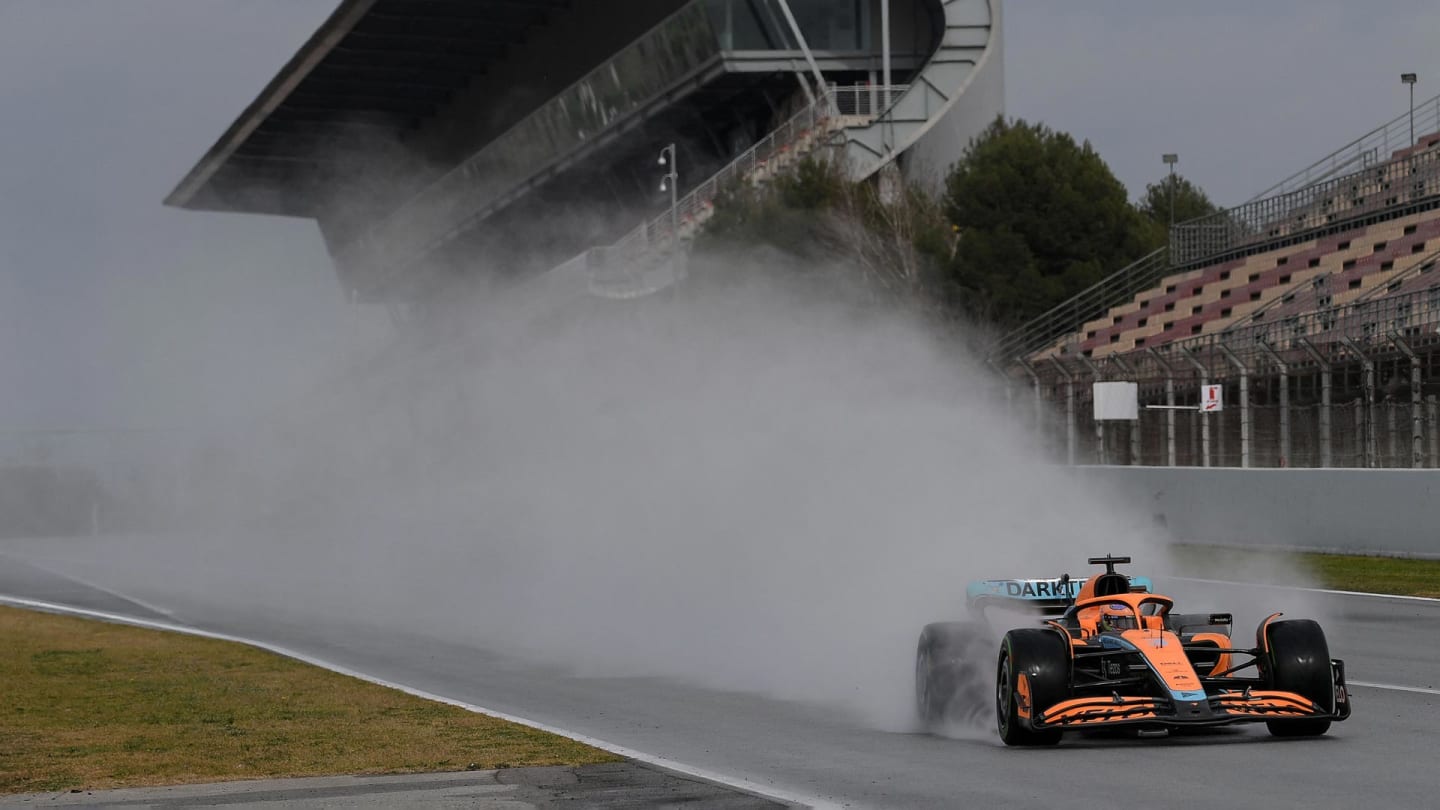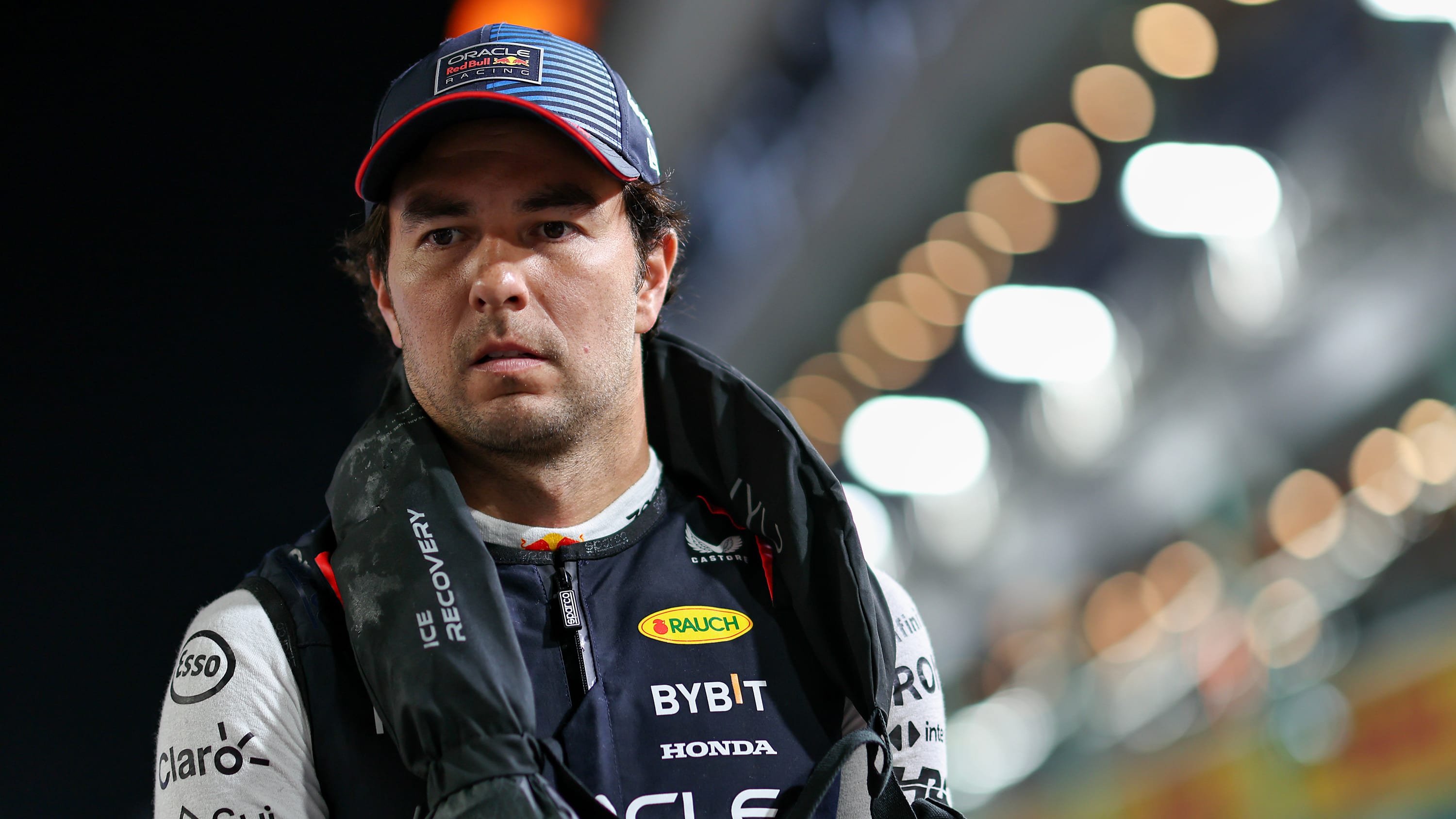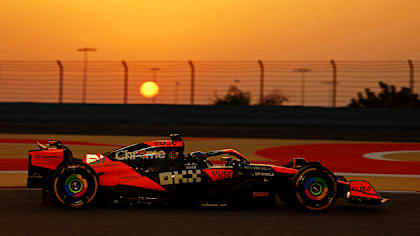
Technical
ANALYSIS: Why Friday’s wet weather test in Barcelona gave us a tantalising insight into 2022’s aero changes

Share

The image above, taken during Barcelona’s wet track running session at the end of the final day, tells a very positive story about the 2022 aero regulations.
In order to make the aerodynamic wake less damaging to the performance of the car behind, the regulations sought to a) channel as much airflow as possible between the rear wheels rather than outboard of them and b) to raise the wake from the diffuser/beam wing/rear wing much higher into the air, leaving a pocket of relatively undisturbed air directly behind.
READ MORE: Pirelli to conduct wet-weather test in the final session of Barcelona running
The image above shows that the vortices of spinning air created from the leading and outer edges of the floor are being pulled back inboard and curling around the inside of the rear tyre. From there, they will merge with the airflow exiting the diffuser, adding to the energy there and helping take that wake higher.
Observation of the cars as they ran down the Circuit de Barcelona-Catalunya’s long straight in a circuit wetted by water tankers after the lunch break showed the wake becoming dramatically higher as the cars accelerated.
F1 pre-season track session 2022: Cars run in the wet on Friday
The ramp angle of the venturi channel’s diffuser is continued by the underside of the beam wing just behind, and that in turn links to the underside of the main wing. It creates a vertical expansion of the air pressure in that region, sending that wake sharply upwards.
In the previous cars, much of the airflow was directed outboard of the rear tyres, and that coming through the diffuser – which was less steeply ramped – was expanded outwards. It made the wake of the car very low and wide – the worst possible combination for the following car.

Daniel Ricciardo powers down the straight in Barcelona
Comments from drivers tend to confirm the effectiveness of what the image is showing: “I can tell you I already felt some differences,” said Ferrari’s Carlos Sainz after deliberately closely tracking other cars. “It’s pretty obvious already and I’m relatively positive about it – optimistic that it’s, I think, going in the right direction.”
Pierre Gasly confirmed that: “Yes, it is definitely better, and I think you will see a difference.”
YOU MIGHT ALSO LIKE
Video LIVESTREAM: Watch all the action from Round 4 of the 2025 F1 Sim Racing World Championship
FeatureF1 Unlocked ‘Ferrari is completely different, but the target is the same’ – Vasseur on how Hamilton will handle his Maranello move
Report Jarno Opmeer and Bari Broumand take victory in Rounds 2 and 3 of 2025 F1 Sim Racing World Championship
News All the key pre-season dates for F1 2025


)

